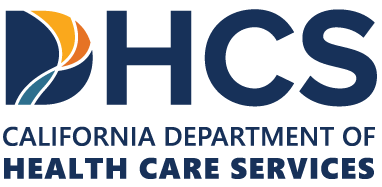Combining Vicodin and alcohol can provoke a potentially lethal interaction that amplifies the risk of both substances exponentially. Anyone prescribed Vicodin or struggling with alcohol abuse should be aware of the risks associated with mixing these substances.
This page examines the severe health consequences, physiological mechanisms, and life-threatening complications triggered by the dangerous combination of alcohol and opioids. You will also discover how to get effective treatment for polysubstance abuse.
Understanding Vicodin’s Composition and Effects
Vicodin contains hydrocodone, a potent opioid analgesic, combined with acetaminophen for enhanced pain relief. Healthcare providers prescribe this medication for moderate to severe pain management following surgery, injury, or chronic conditions. The hydrocodone content binds to opioid receptors in the brain and spinal cord, blocking pain signals while producing euphoric effects.
Inherent risks accompany the therapeutic benefits of the medication. Even when used as prescribed, Vicodin can cause drowsiness, respiratory depression, and cognitive impairment. These effects become much more pronounced and dangerous when alcohol enters the equation.
How Alcohol Amplifies Vicodin’s Risks
Alcohol and Vicodin are both depressants of the CNS (central nervous system), meaning they slow bodily functions, including breathing, heart rate, and brain activity. When combined, these substances create a synergistic effect where the total impact exceeds the sum of their individual effects.
This interaction occurs because both substances compete for the same metabolic pathways in the liver. Alcohol inhibits the enzymes responsible for breaking down hydrocodone, causing the opioid to remain in the system longer and at higher concentrations. Simultaneously, Vicodin can intensify the depressant effects of alcohol, creating a volatile feedback loop.
The combination has a drastic impact on judgment, coordination, and reaction time. Individuals mixing Vicodin and alcohol may experience profound sedation, confusion, and memory loss. More critically, the respiratory depression caused by both substances can become severe enough to cause unconsciousness, coma, or death.
Respiratory Depression: The Primary Threat
Respiratory depression is the most immediate and life-threatening consequence of mixing Vicodin and alcohol. Both substances suppress the brain’s respiratory center, which controls breathing patterns and oxygen exchange. When used together, they can cause breathing to become dangerously slow or stop entirely.
Normal breathing rates range from 12 to 20 breaths per minute. The combination of Vicodin and alcohol can reduce this rate to fewer than 8 breaths per minute, a condition known as bradypnea.
In severe cases, breathing may become so shallow that insufficient oxygen reaches vital organs, leading to hypoxia. Hypoxia causes brain cells to begin dying within minutes. Even if emergency medical intervention prevents death, prolonged oxygen deprivation can result in permanent cognitive impairment, motor function deficits, and other neurological complications.
Liver Damage and Acetaminophen Toxicity
The acetaminophen component in Vicodin poses additional risks when combined with alcohol. The liver metabolizes both substances, and their simultaneous presence can overwhelm the organ’s processing capacity. Alcohol consumption increases the production of toxic metabolites from acetaminophen, potentially causing severe hepatoxicity.
Acute liver failure from acetaminophen poisoning can occur with doses as low as 4g when combined with regular alcohol use. Chronic alcohol consumption reduces the threshold even further, making individuals more susceptible to liver damage at lower doses. Symptoms of acetaminophen toxicity may not appear for 24 to 48 hours, during which irreversible liver damage can manifest.
The combination can also cause acute hepatitis, characterized by nausea, vomiting, abdominal pain, and jaundice. In severe cases, individuals may require liver transplantation or face fatal outcomes.
Cardiovascular Complications
Mixing Vicodin and alcohol is linked to cardiovascular risks beyond respiratory depression. Both substances can cause hypotension (low blood pressure) and bradycardia (slow heart rate). When combined, these effects can lead to cardiovascular collapse, where the heart is unable to pump sufficient blood to maintain vital organ function.
The combination also increases the risk of cardiac arrhythmias, especially in those with existing heart conditions. Irregular heart rhythms can be life-threatening and may require immediate medical intervention. Beyond this, the profound sedation caused by the combination increases the risk of falls and accidents that could result in severe injuries.
Cognitive and Psychological Effects
The neurological impact of combining Vicodin and alcohol includes cognitive and psychological effects. People mixing alcohol and opioids commonly experience confusion, disorientation, and memory impairment. These effects can persist long after the acute intoxication phase, particularly with repeated use.
Combining CNS depressants impairs decision-making abilities and risk assessment, leading to poor judgment and dangerous behaviors. People may engage in activities they would normally avoid, such as driving or operating machinery, without being aware of their level of impairment.
Long-term use of this combination can accelerate the development of both tolerance and dependence on both substances. The brain adapts to the presence of both central nervous system depressants, requiring increasingly higher doses to achieve the same effects and prompting a cycle of escalating use.
Increased Addiction Risk and Withdrawal Complications
Combining Vicodin and alcohol increases the risk of developing an addiction (substance use disorder). The enhanced euphoric effects create stronger psychological associations and cravings, making it more challenging to stop using either substance independently.
When dependence develops, withdrawal becomes more complex and potentially dangerous. Individuals may experience symptoms from both substances at the same time, including:
- Anxiety.
- Tremors.
- Severe cravings.
- Seizures.
The overlapping withdrawal syndromes can be demanding to manage and typically require professional medical supervision.
Mixing alcohol and Vicodin also increases the likelihood of polysubstance abuse, where individuals are using multiple substances to increase or intensify effects. This pattern dramatically complicates treatment and raises the risk of overdose and other serious complications.
Warning Signs and Emergency Situations
Identifying the signs of dangerous interactions between Vicodin and alcohol can be life-saving. Warning signs include:
- Slow or shallow breathing.
- Blue lips or fingernails.
- Extreme drowsiness that prevents awakening.
- Confusion.
- Disorientation.
- Slow or irregular heartbeat.
Emergency symptoms requiring immediate medical attention include unconsciousness, no response to loud noises or pain, gurgling sounds during breathing, and cold or clammy skin. If any of these symptoms occur, call emergency services immediately and provide information about both substances consumed.
Even seemingly minor symptoms like persistent nausea, vomiting, or abdominal pain should not be ignored, as they may indicate the development of liver toxicity or other severe complications.
Safe Alternatives and Prevention Strategies
Preventing hazardous interactions requires strict adherence to prescription guidelines and complete abstinence from alcohol while taking Vicodin. Individuals should inform their healthcare providers about their complete medication list and alcohol consumption patterns to ensure safe prescribing practices.
Alternative pain management strategies can reduce reliance on opioid medications. This includes:
- Physical therapy.
- Non-opioid pain medications.
- CBT (cognitive behavioral therapy).
- Acupuncture.
- Meditation.
For those struggling with alcohol use, addressing this issue before beginning opioid therapy is essential. Professional addiction treatment programs can provide the support and resources needed to achieve and maintain sobriety.
Get Help with Opioid and Alcohol Abuse at a Premier Rehab in California
The combination of Vicodin and alcohol creates a potentially fatal interaction that dramatically raises the risk of respiratory depression, liver damage, cardiovascular complications, and overdose death.
If you or someone you know is struggling with prescription drug abuse or alcohol dependence, professional help can promote sustained sobriety. At The Retreat South Coast, our experienced and compassionate team provides comprehensive detoxification services and personalized treatment programs designed to address the challenges of polysubstance abuse.
Reach out today by calling admissions at (949) 642-1789 and begin your recovery right away.









